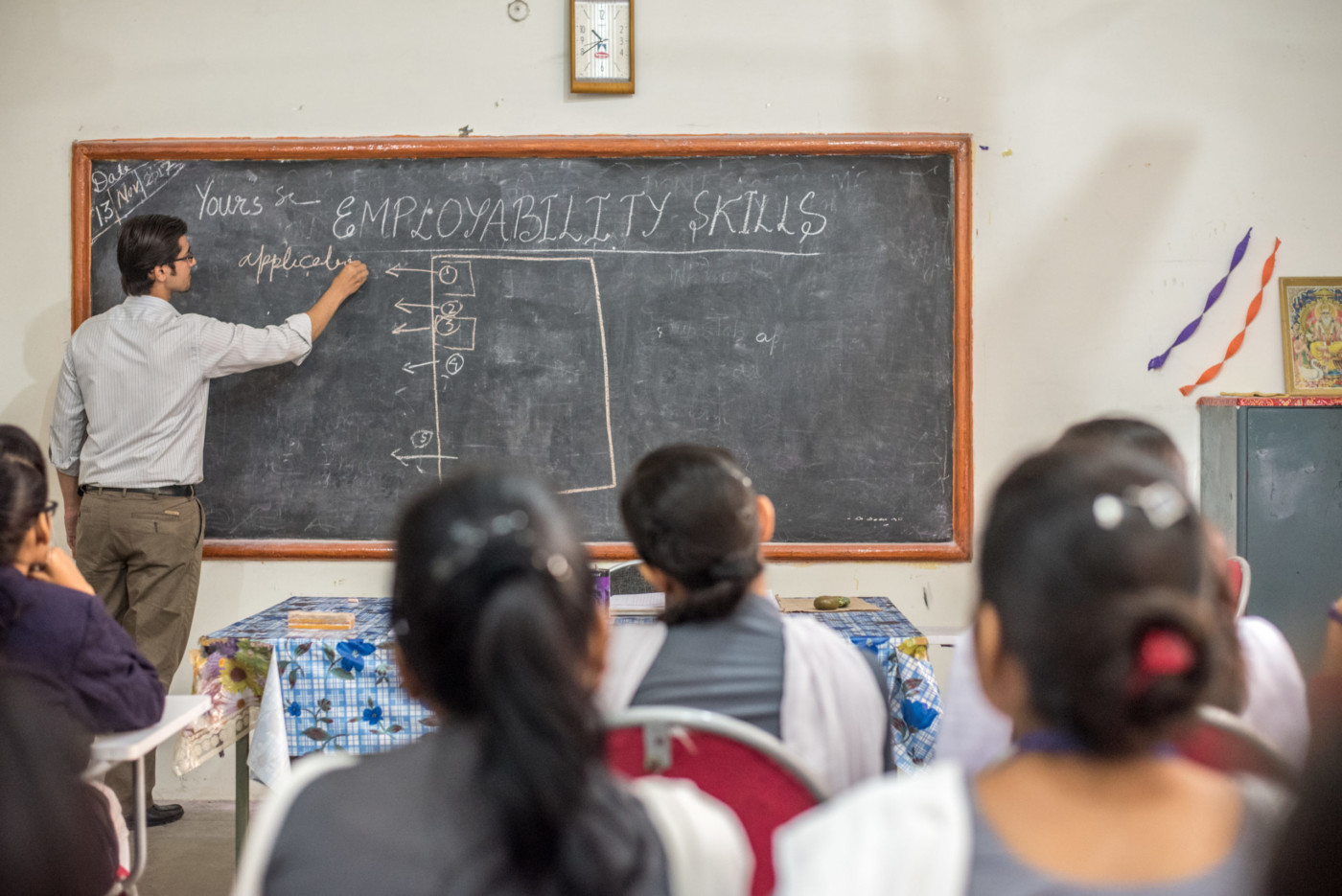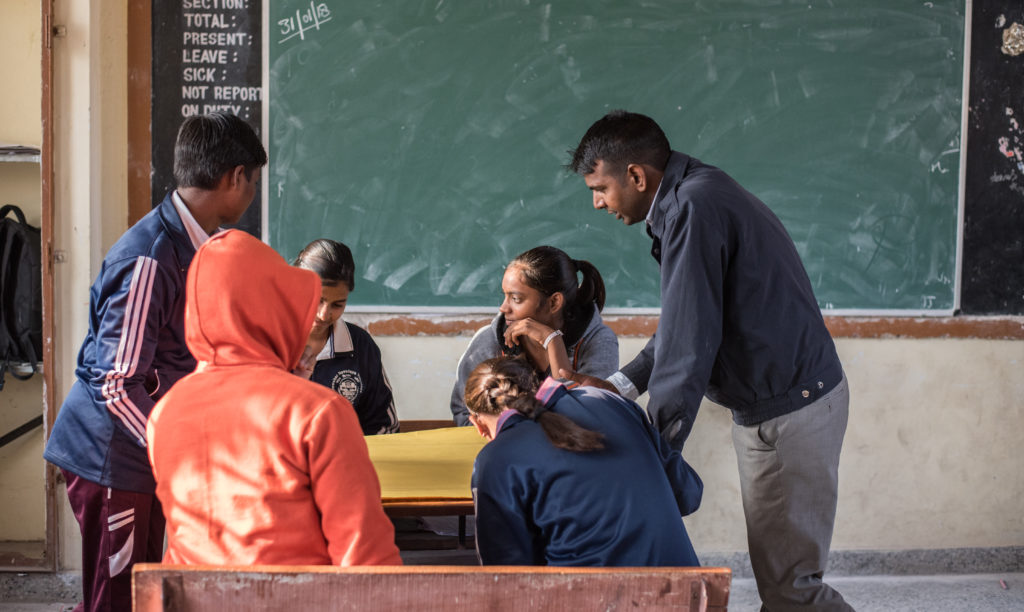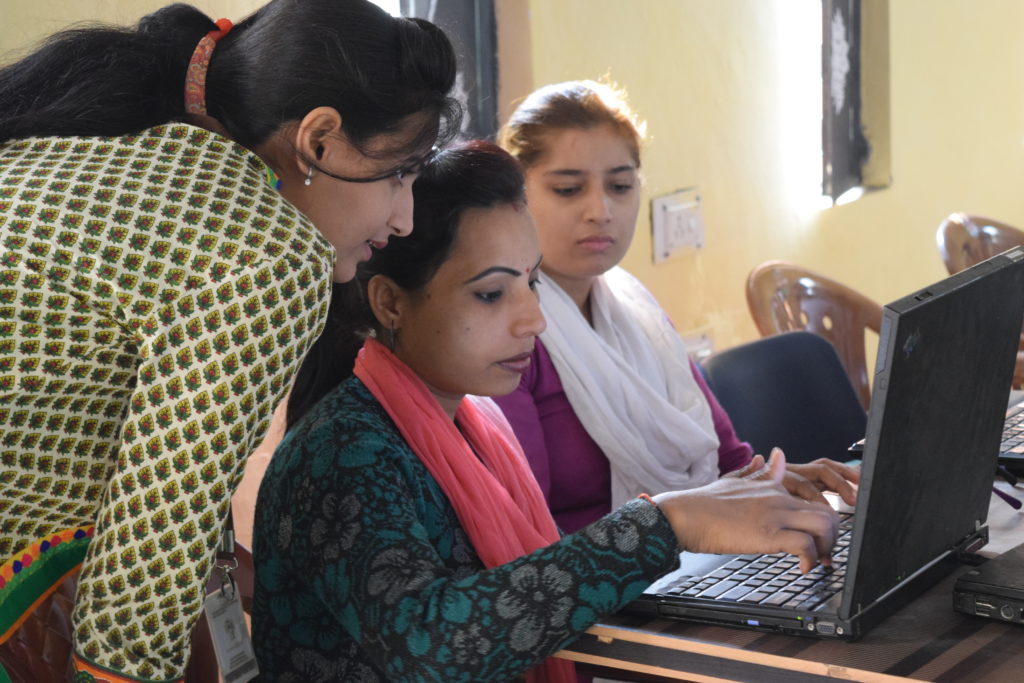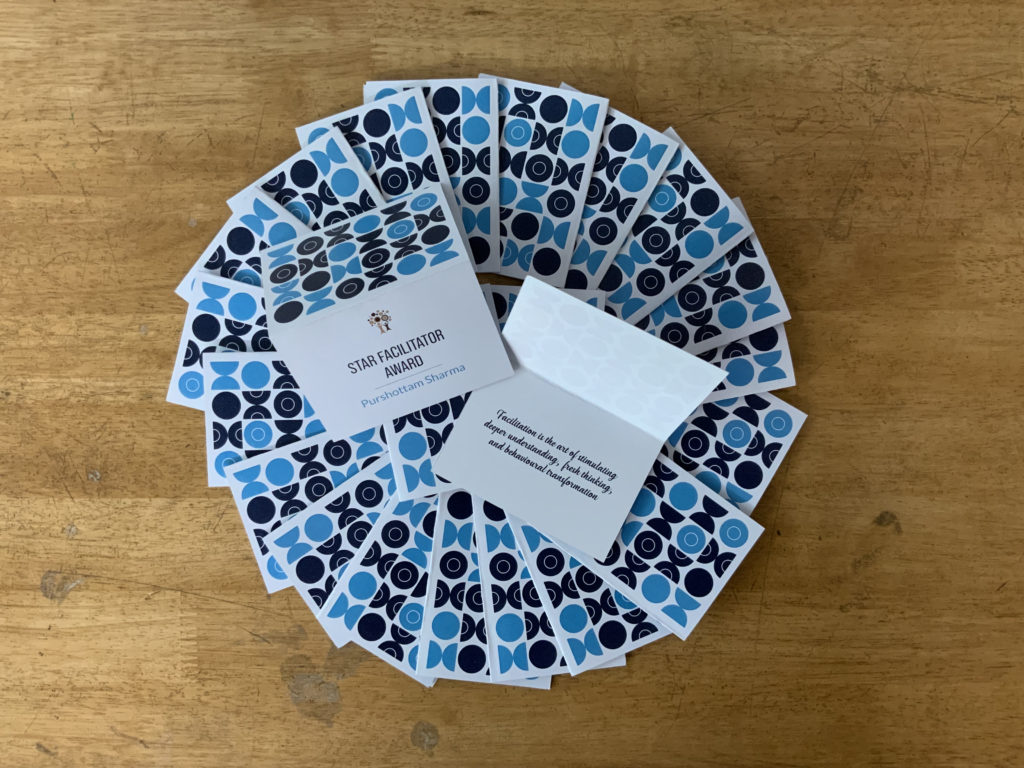
The art of facilitation
In the school-to-work space, we often use facilitation and training interchangeably when discussing skill-building programs for youth. Sometimes, we also look at facilitation as a silver bullet that can solve all problems with conventional teaching in colleges.
However, is there a difference between training and facilitation? And is facilitation really the silver bullet we were all looking for as students of a rigid education system?
To better understand what we mean by facilitation and how it may differ from training or teaching, I spoke with experienced professionals from each industry. Here’s what I learned:
Create the learner’s ‘why’.
Shubhra has worked for more than 10 years as a facilitator in the corporate and social sectors. When working with youth, she shares how a facilitator tries to understand students’ learning motivations to create the right environment. She says, “The first thing a facilitator does is create the why – where will you, the learner, be able to use a skill, what is it that you need to be able to keep using it, and eventually, develop a level of expertise in it.”
Demonstrating the ‘why’ to students requires innovation. You create a relevant and engaging environment using experiential learning methods like role-playing. Shubhra adds, “If you stimulate that learning process in the audience, you win the first half of the battle – you pique their interest, understand why it is important for them, and reach them in a context they can relate to.”

Follow a ‘get what you give’ model.
In facilitation, Shubhra shares how the intent is to let students take charge of their learning, “We can’t train someone on life skills. We can facilitate their learning by creating the right environment and sharing resources.”
As a student, how willing you are to experiment, get comfortable failing, and learn from your environment, determines the quality of your experience. With no teacher reading aloud an important (read: confirmed for the exam) chapter, or trainer listing out Excel spreadsheet formulas, your learning depends on how actively you engage in a session.
Build on the learner’s current knowledge.
Most of the professionals I spoke to agreed that due to a need for knowledge-building, some amount of teaching or training is necessary before any facilitation occurs. Shubhra adds, “Sometimes, like in most technical skills, we require structured learning. If you do not build that core content adequately, then learning suffers at the end.”
Shivendu, a skilled trainer and a former Teach for India fellow, shares how he thinks teaching and training may be the same: both are ways of building knowledge. However, this is where facilitation differs, “Facilitation is about bringing together what you know and what your audience already knows.“
Banshidhar, an academic professional with over 15 years of experience, shares how teaching – at its core – remains around knowledge dissemination. However, as it orients itself from ‘teaching the syllabus’ to ‘teaching the student,’ facilitation will be helpful, “A fixed timetable, a fixed classroom, its fixed students, one fixed direction and 3 years of a course: this is monotonous. Facilitation can bring activities, novel ideas, and new information – giving students new adventures.”
Leave little scope for hierarchy and fear.
An enriching facilitation session begins with creating a safe space for failing and learning. Both the facilitator and the participants agree and practice being vulnerable. As a result, the facilitator feels like she belongs to the group of students. She positions herself as less of an expert and more of a peer — someone who has worked through her failures and now has insights to share.
Eventually, it is this relatability that drives change.

Once there’s little scope for hierarchy in the group, a learning exchange begins. Shamim, an experienced facilitator, reflects, “During a session, the students you’re engaging with aren’t any different from you. You organize activities along with them and in doing so, learn a lot about yourself. It’s not a one-sided affair.”
Shamim shares how tackling the fear of failure and shame encourages learning, “Once there’s no fear, students begin to ask all kinds of questions. They develop a spirit of inquiry and debate in a real sense. They build courage and start to think from a wider perspective. Now, there’s one equal platform for us to teach and learn from, in a manner that sticks with you for long and helps you achieve your goals.”

At the core of what we do as teachers and trainers, is to have sparked a learning. However, as facilitators, we also want to create learners.
In the school-to-work journey, facilitators nurture youth to become lifelong learners through activities and exposure. They develop kinship to build trust, become friends and advocates, and enable youth to reach for their dreams sustainably.
While it may not be a silver bullet, facilitation is a useful technique that is different in its approach and outcome than teaching or training and can aid both. There is something to be said about the unique feeling it leaves learners with – more assured in their capabilities, more independent, and yet community-oriented. Or as Shamim likes to call it – the ‘facilitation-wali feeling.’